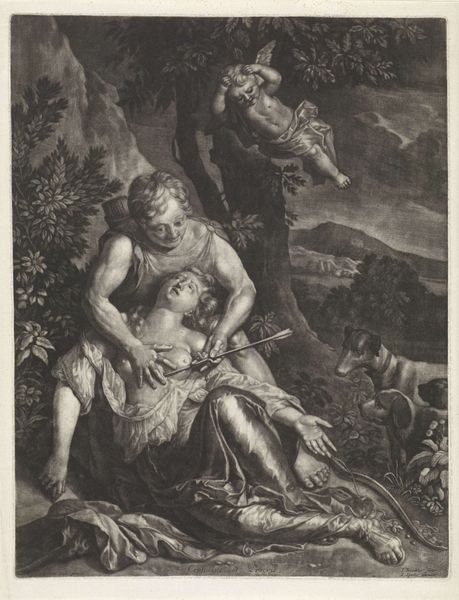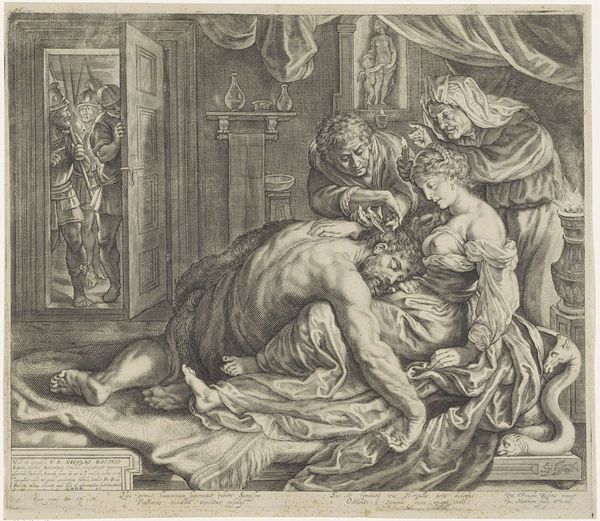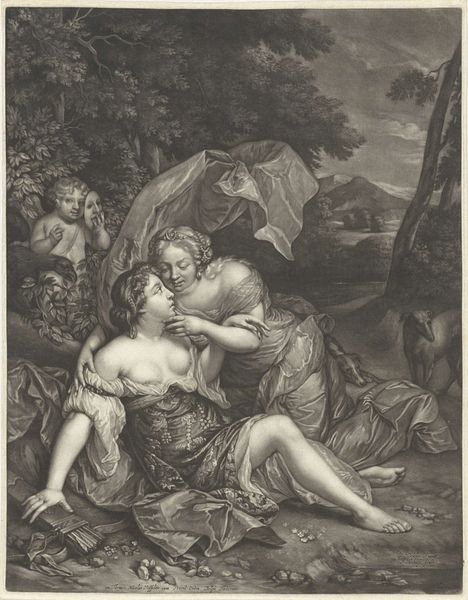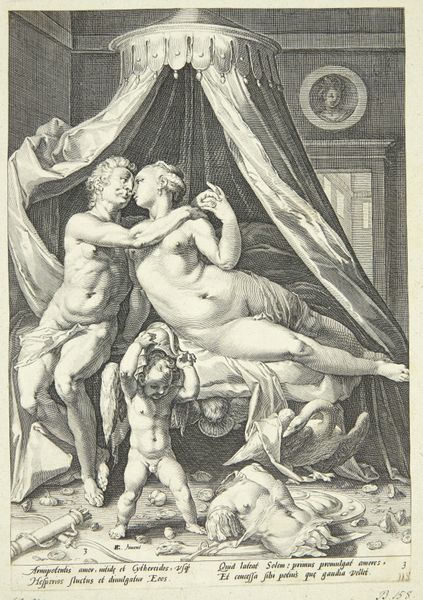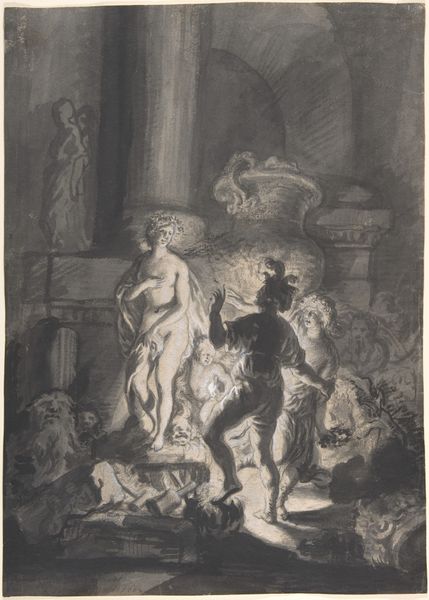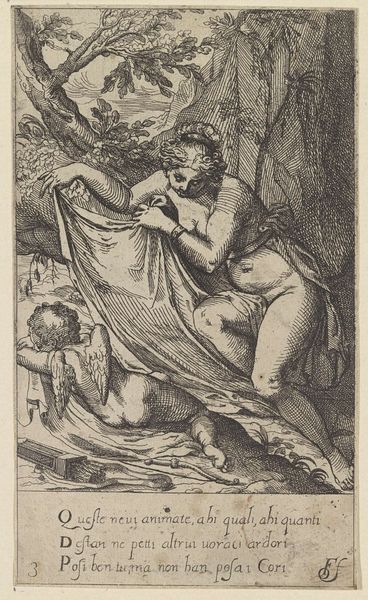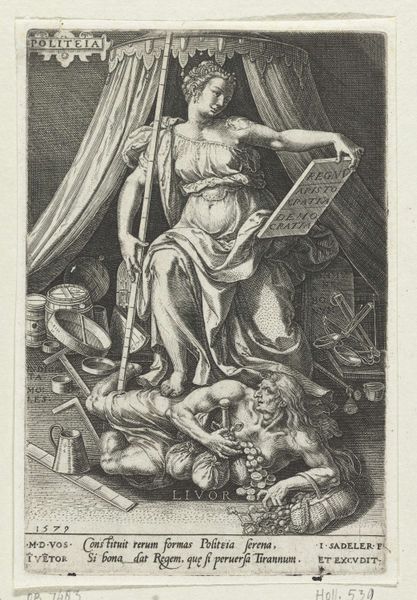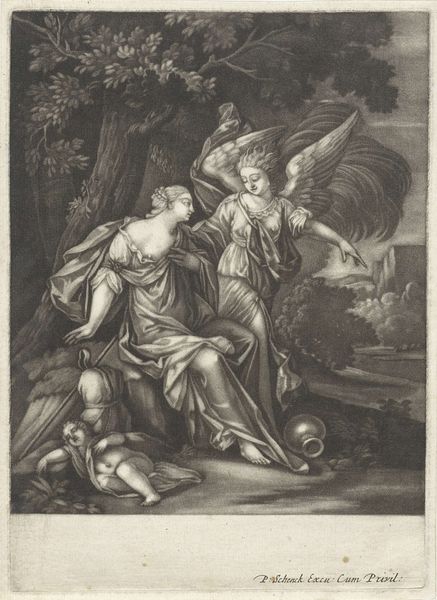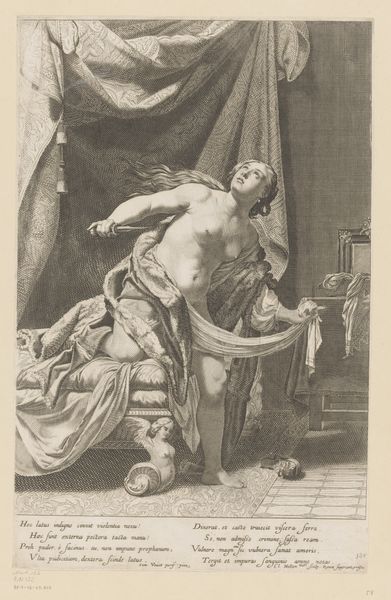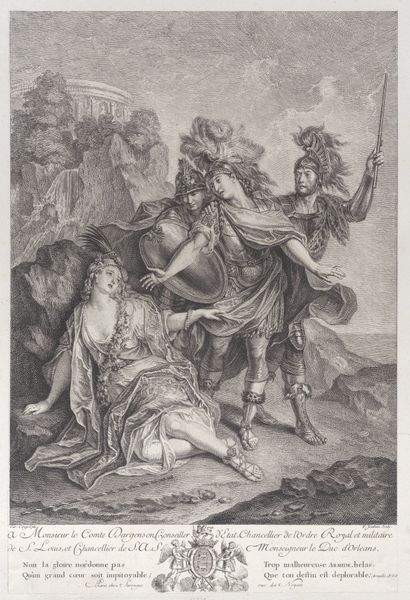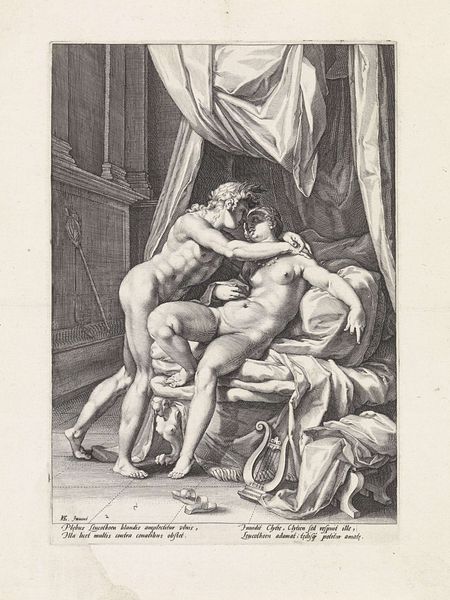
print, engraving
#
allegory
#
baroque
# print
#
line
#
history-painting
#
nude
#
engraving
Dimensions: height 259 mm, width 182 mm
Copyright: Rijks Museum: Open Domain
Curator: Here we have an engraving entitled "Amor wordt gekortwiekt," or "Cupid's Wings Clipped," dating roughly from 1662 to 1726 and attributed to an anonymous artist. Editor: The scene presents a rather subdued impression. Cupid appears to be sleeping soundly, almost unaware of the actions taking place around him. Curator: Precisely. Observe the composition: Cupid is centrally located, the focal point in a triangle formed with the figures attending to him. These figures, presumably goddesses or allegorical representations, engage in distinct actions. One holds his bow and a spent quiver while the other is cutting Cupid's wings with scissors. Editor: The materials evoke interest—engraving. That painstaking process would require immense skill. I am drawn to ponder the original intention in reproducing an allegorical scene as prints. Were these luxury products or educational materials? Were they trying to disseminate ideas about love, power, and agency within specific strata of the art market? Curator: Good point. There is a sharp contrast. Note the almost cruel dispassion of these classical figures, rendered sharply through the linear engraving, a kind of rationality imposed upon the subject of Love. The artist uses these compositional elements to explore the transience of love. The very act of clipping Cupid's wings seems almost a punishment. Editor: And thinking of production: were workshops of artisans engaged, or was this a singular master printmaker laboring over this image? The meticulous craft here forces consideration of value, commerce, and the tangible nature of the image circulating through society. How does it frame social dynamics and expectations, turning raw materials and painstaking effort into potent imagery. Curator: Yes. Perhaps that interplay—between the individual skill of the engraver and broader social themes—adds depth. It highlights Love’s complex nature, its potential to be both ennobling and enslaving. This print really underscores the fragility and even the manipulation inherent in affection. Editor: Well, thinking about the actual, material handling and mass distribution adds quite an earthy aspect. It humanizes those gods just a little more and that reminds us about how images also "work."
Comments
No comments
Be the first to comment and join the conversation on the ultimate creative platform.
